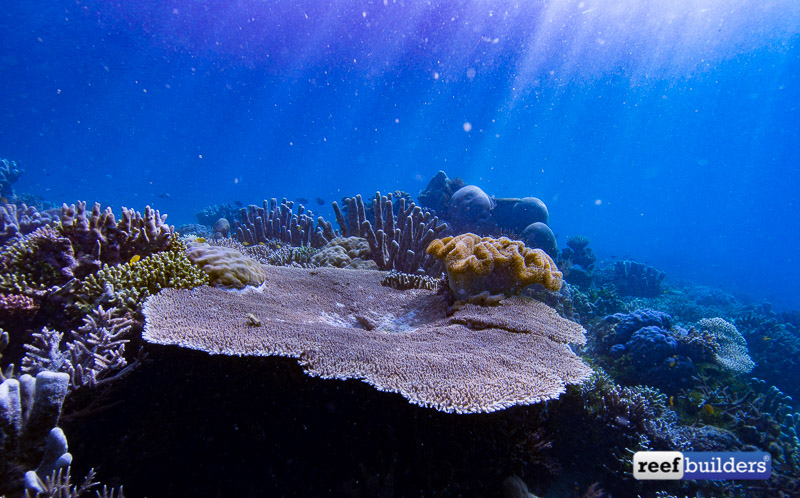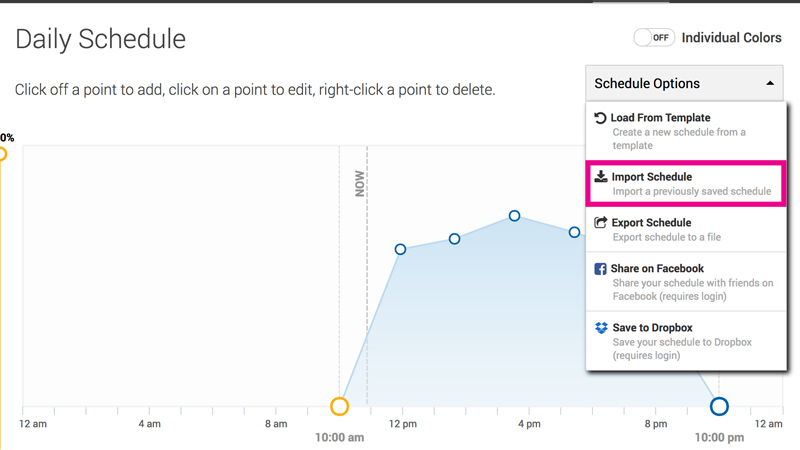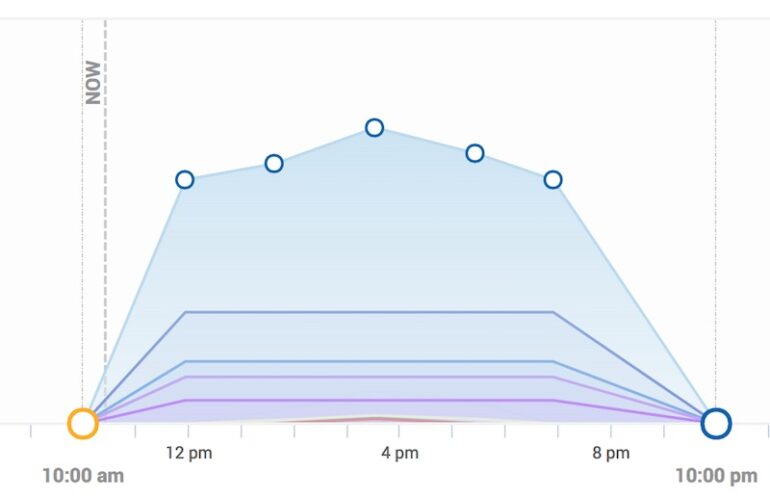Back when we were just using T5s or metal halides, the ‘programming’ was only concerned with how long to run the lights of a given intensity. But now that we’ve got access to multiple channels of light, in various colors, it can be quite overwhelming to figure out which colors to run, for how long and how bright.
Over the years I’ve gotten so many questions regarding how I program my Radion fixtures and LED lights in general. I think it’s safe to say that we can separate out the various colors and channels into three groups; blue spectrum including UV, the white channels both white and warm white, and what I call the ‘accessory’ colors which are usually red and green.

I’ve long considered the blue spectrum to be the foundation of coral lighting – it’s kind of hard to overlight the majority of corals with just blue light so this is the color I ‘lay down’ first, like a bassline on a song. So for the Radion LED I use, as well as most other LED fixtures, I’ll have the blues ramp up from 0 to 100% in about an hour or two, and have that spectrum blanket the tank at full intensity for eight to ten hours.
If you left the programming at just blues your corals would be fine, and this is actually not a bad setting to start with when you begin an aquarium, while it’s going through its bacterial cycling and succession of algaes and diatoms. But of course we want our corals to grow well, and we like seeing all the colors possible.

The accessory color channels of red and green are also hard to mess up, just a little bit of these two colors in equal proportion is the best way to go. It’s important to remember that algae loves red light so definitely don’t overdo it, and many of our deeper water corals like Leptoseris and Stylocoeniella, and many chalice corals will not appreciate too much red light for too long. So just err on the side of caution and keep the red and green channels just bright enough to notice.
The final and most critical LED color group to be mindful of are the whites. White LEDs have become incredibly bright, cranking out more PAR than most of our corals can handle. As a general rule I don’t advise anyone run their whites brighter than 50% intensity, and then only for around half of your overall photoperiod. If you have access to a PAR meter you don’t really want to exceed 400 umols of light for more than six hours – the tropical day might be twelve hours long but the sun is really only beaming down at a bright angle for half of that time.
This is only generally speaking as if you’re trying to grow shallow SPS corals or clams at breakneck speeds by all means, full steam ahead. But really the hardest thing to do is to have a community reef tank with a wide assemblage of corals with bright light corals at the top, low light corals at the bottom of the tank, which is precisely what I’m currently doing in my own reef.

So for reference, I’ve included the three time points of my lighting profile for the Ecotech Radion G3 & G4 Pro. These three points are the ramp up to full brightness, and then these are repeated in reverse order to finish up the lighting program. It can’t be stressed enough that if you are unsure, just make your lights dimmer as corals will lose color and grow slower in lower light, but they can quickly bleach and die much faster if the light is too bright, not to mention the stimulation of unwanted algae growth.
If you want to try out the ‘Coral Community’ program for your Radion LEDs here’s a link to my actual lighting profile that you can import to Ecosmart Live. You can use this either as it is, or as a starting point to program your own lights, either way I have used some version of this lighting profile for many years and it should work well for a wide variety of reef tanks.




